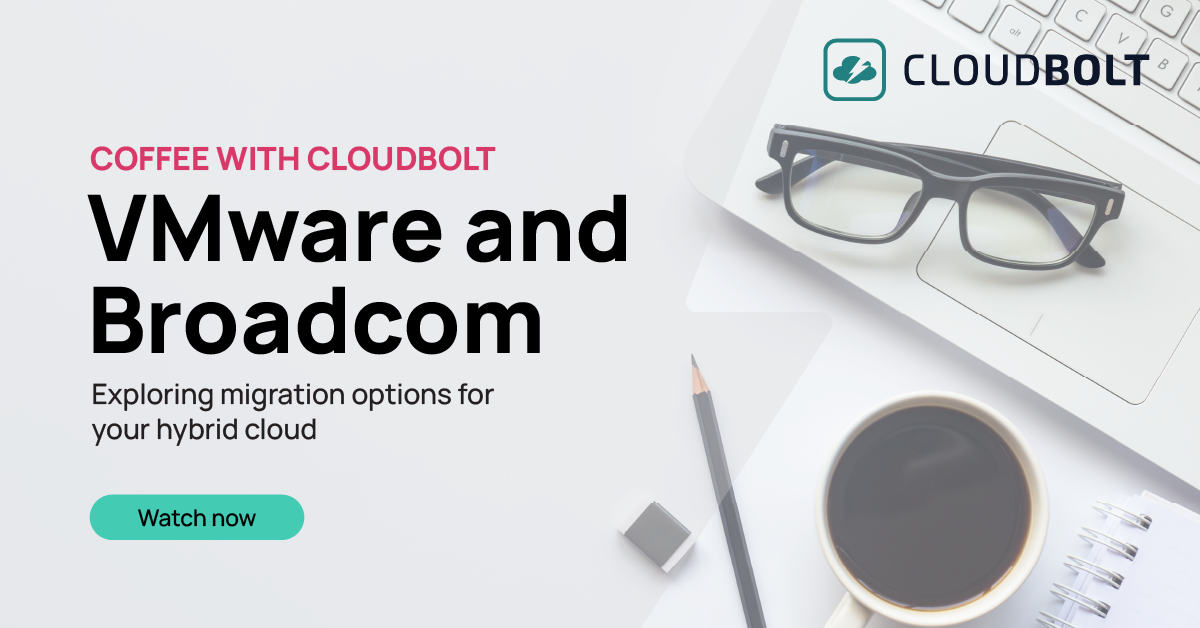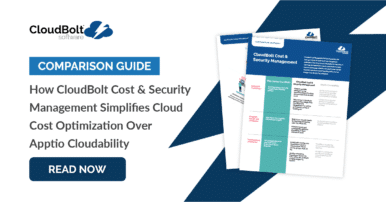
The discipline of FinOps provides enterprises with the required framework and tools to enhance visibility, establish accountability, and optimize cloud spending. As organizations embrace application architectures based on ephemeral cloud resources, adopting a proactive approach to cost management becomes necessary.
While there are many advantages to traditional FinOps, the model has limitations when the focus shifts toward automating cost savings measures by scanning cloud configuration parameters, sifting through billing records, and analyzing usage trends. Augmented FinOps represents the next stage of evolution in cloud financial management, helping practitioners act faster with less effort. Through augmented FinOps, organizations can apply intelligent orchestration backed by artificial intelligence and machine learning technologies to untangle the complexities inherent in hybrid cloud environments that have adopted continuous delivery, containerized application architectures, and autoscaling infrastructure.
This article delves into the best FinOps practices for cloud cost optimization and highlights how augmented FinOps can elevate traditional FinOps.
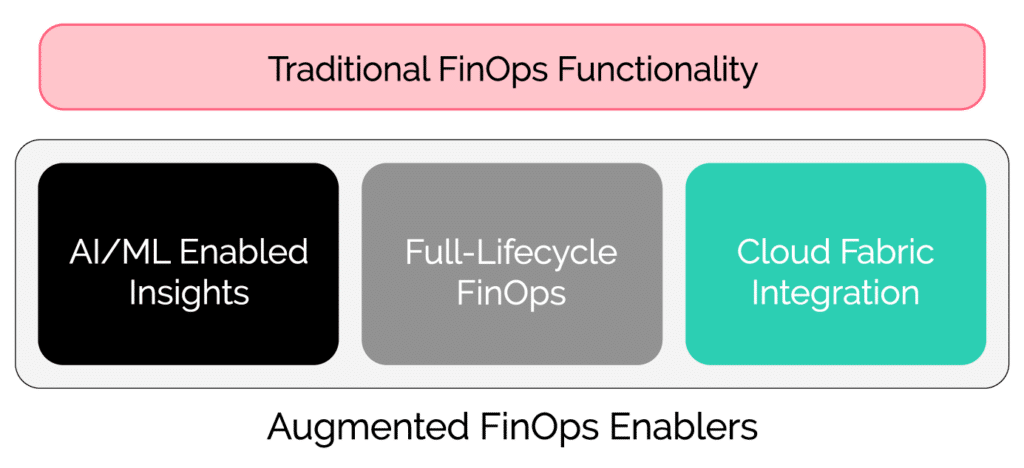
How traditional and augmented FinOps differ in terms of cloud cost optimization best practices
| FinOps best practice | Traditional FinOps | Augmented FinOps |
|---|---|---|
| Turn off idle resources | Minimize waste by turning off VM instances when not needed, such as switching off dev instances on weekends, terminating idle VM instances with low utilization, or terminating idle disks not connected to a VM. | Ask your FinOps tool for a list of unattached AWS EBS disk volumes using conversational AI. Then ask it to take snapshots of the volumes and terminate them. |
| Rightsize overprovisioned resources | Monitor utilization metrics for resources (e.g., CPU utilization percentage and Memory utilization percentage) and rightsize the resources to match the workload requirements. Select from an array of SKU types to optimize the cost-to-performance ratio. | Rely on feedback loops to refine recommendations based on engineers’ implementation trends. Capture insights to act based on lead time and provide real-time visibility into post-implementation resource utilization. |
| Commit to usage for discounts | Analyze resource usage patterns and reduce cloud costs by committing to future usage through reserved instances and savings plans. Renew existing commitments or buy new commitments based on tracking reservation utilization and future needs. | Use unit economics to guide cloud investment decisions. For example, use the metric cost per core hour and cost per GB of RAM to decide on the correct instance type and reservation category. |
| Incubate a cost transparency culture via showback and chargeback | Use resource tags to allocate costs by team, application, department, or cost center. Create a culture of transparency and accountability to ensure the optimal usage of cloud provisioning and budgets. | Extend the modalities of FinOps beyond the public cloud. Incorporate software licenses like an SQL server, SaaS services, and a hybrid cloud environment in a single control framework as part of a unified cloud fabric. |
| Forecast future cloud investments | Predict future cloud spend while incorporating historical growth, seasonality, and workload drivers. Utilize the available forecasts to drive resource provisioning decisions. | Employ AI-backed anomaly detection to scrutinize and highlight any significant variances from the planned budget. Leverage advanced AI/ML algorithms to identify internal and unidentified financial trends. |
Turn off idle resources
Idle resources are one of the biggest sources of waste across a cloud ecosystem. Engineers typically operate in an environment where innovation and velocity are the major driving factors, which means cost considerations may take a back seat. In many instances, software developers are unaware of the potential savings opportunities and consequently don’t take any remediating action. FinOps teams regularly share recommendations with their engineering teams but find it challenging to make technical teams act on eliminating this idle infrastructure.
Augmented FinOps can help bridge this vast chasm between potential opportunities and realized savings. Through conversational AI, engineers can use natural language to identify the biggest cleanup opportunities and take actions on the go to drive the effective utilization of cloud spending. This has two main benefits: deallocating engineers’ bandwidth for more impactful operations and meaningful innovation, and instituting a culture of accountability and agility to manage organizational cloud spending proactively.
CloudBolt’s interactive chatbot uses natural language to deliver real-time analysis, actionable insights, and strategic recommendations to help users optimize spending and drive the effective use of time, resources, and spending.
The following are examples of the kinds of prompts that can be used for idle resource cleanup:
- “Which servers are good candidates for termination due to low utilization?”
- “Identify all idle elastic load balancers in the eu-west-1 region.”
- “Find all unattached EBS disks for project 1, terminate them, and calculate the financial savings resulting from the termination.”
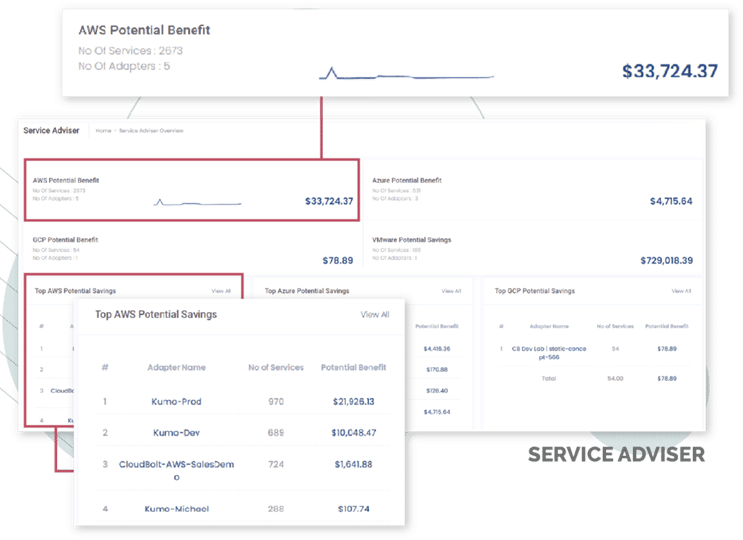
Rightsize overprovisioned resources
As mentioned earlier, engineering teams are not primarily evaluated based on cost savings; they are assessed in terms of performance, scalability, and innovation goals. As a result, teams frequently end up overprovisioning resources in the cloud to eliminate even a remote chance of experiencing a performance problem in the future, including resources that are not mission-critical. This overprovisioning of resources results in inefficient utilization.
Rightsizing these resources to match the resource configuration with workload requirements can free up capacity and budget, providing resources that can be invested better for other organizational use cases.
The issue is that engineers are not always aware of the available savings opportunities. At the same time, engineering teams might complain about the irrelevance of recommendations that don’t account for their feedback and challenges. This situation slows down the adoption of FinOps practices.
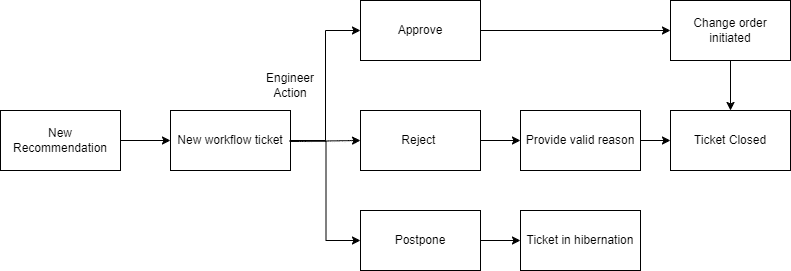
Augmented FinOps solves this challenge by incorporating custom business logic into financial data models to enable personalized insights that cater to business objectives. Orchestration feedback loops account for user requirements by refining recommendations based on the history of implemented changes.
For example, the FinOps tool might recommend transitioning from a 16-vCPU to an 8-vCPU host. The AI/ML algorithm captures the user rejection feedback and stops recommending rightsizing operations for the workload.
Managed services like CloudBolt use advanced AI/ML algorithms to provide customized performance-based and cost-based rightsizing recommendations. The cost automation executes rightsizing activities at scale, which frees up FinOps and engineering teams to focus on other high-value tasks.
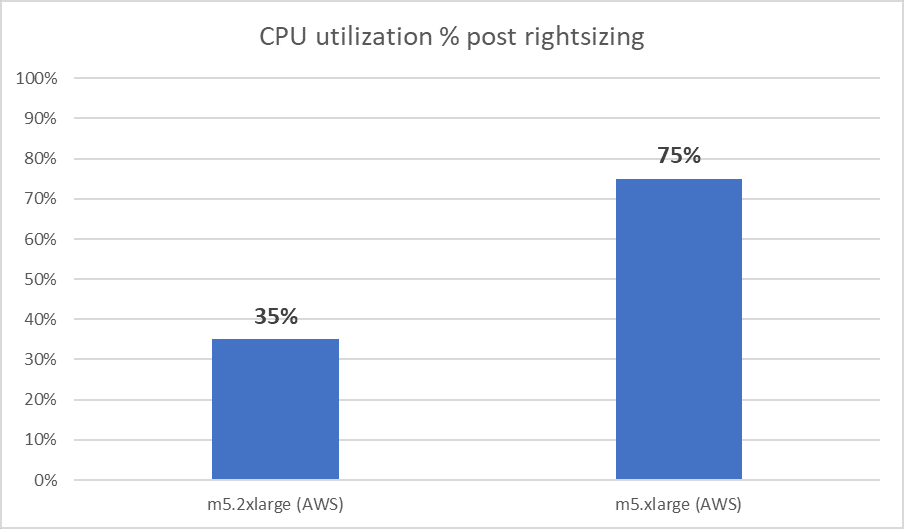
Commit to usage for discounts
Commitment contracts like reserved instances and savings plans allow organizations to reduce infrastructure costs by committing to future usage at a discounted price. However, the purchase of commitment instruments is a complex and tedious process that requires careful analysis of resource usage patterns, the identification of correct model and payment terms, and ensuring continuous reservation management to avoid wastage.
Most MSPs offer discounts through pricing options over the on-demand price based on parameters such as these:
- Instance type and family
- Region
- Term (one year or three years)
- Payment options (all up front, partial up front, no up front, etc.)
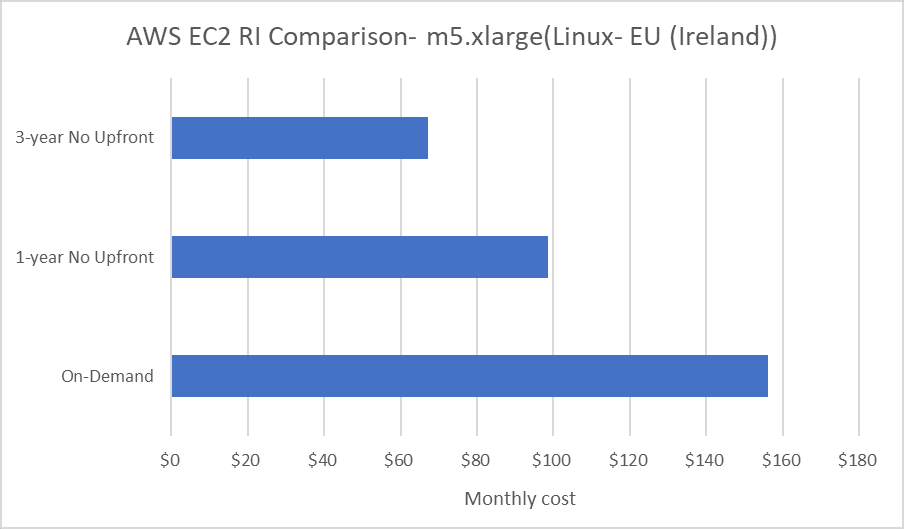
The management of commitment contracts is challenging because most are fixed in nature and cannot be refunded after purchase: Users will be charged for reservations irrespective of whether the capacity contracted for is used. That’s why using future workload estimates to guide reservation selection is critical.
Augmented FinOps tools like CloudBolt allow for the integration of financial data with business performance metrics to guide reservation purchase decisions. For example, you can use the unit economics metric of cost per CPU core hour and cost per GB of RAM to decide on the usage and commitment volumes. This benchmarking process results in investment decisions that are continuously evaluated over time.
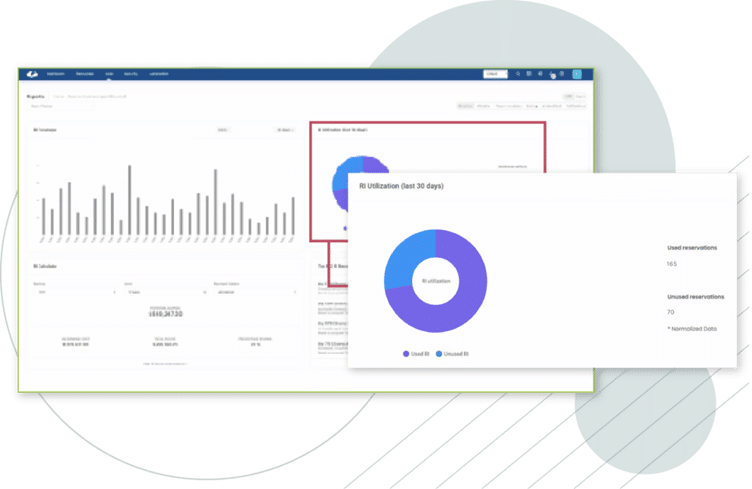
The tools also help you understand when to purchase new reservations and when to let the existing reservations expire. Automated nudges and warnings provide engineering teams timely alerts on reservation utilization to avoid waste.
Incubate a cost transparency culture via showback and chargeback
Cost transparency forms the fundamental backbone of all FinOps operations. Cost transparency practices like showback and chargeback promote accountability and encourage the strategic use of resources across the organization. Traditional FinOps practices use a combination of tags like cost centers, environments, workload owners, and divisions to allocate infrastructure costs fairly across the organization.
However, the scope of analysis expands as organizations adopt new technologies such as databases, caching, or application messaging in their application stacks. The scope also expands as employees rely on software as a service (SaaS) applications not hosted in the public cloud or data centers. This scope creep has constituted a historical blind spot for consolidated cost analysis.
Augmented FinOps solves this challenge by integrating with public cloud provider APIs, data center environment technologies such as VMware, and SaaS providers like Microsoft Office365. This approach provides a more holistic view of business with a unified control framework encompassing all pertinent spending categories, such as:
- Public cloud
- Private Cloud
- SaaS solutions
- vSphere, OCI
Organizations can try to integrate all these diverse sources of data manually or use platforms like CloudBolt, which provide a seamless implementation of the hybrid chargeback programs across public cloud and data centers. CloudBolt leverages the notion of policies to enforce cloud spending within budgets and governance requirements.
The granular real-time visibility into usage and expenses across environments enables different stakeholders to see the reports pertinent to them. For example, engineers see the infrastructure consumption only for their assets, while financial managers would see deviations from budgets by department.
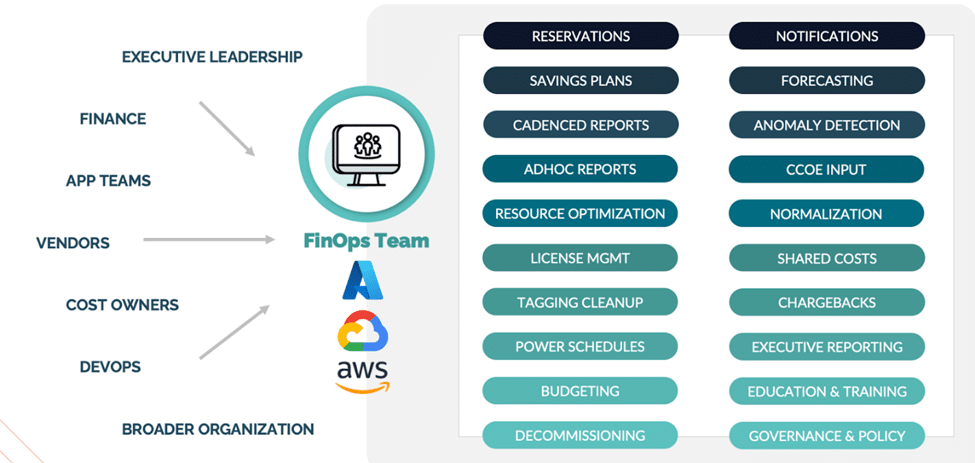
Forecast future cloud investments
Cloud forecasting is another modern pillar of a mature FinOps practice, helping organizations plan and accurately predict their infrastructure costs in the future.
Traditional FinOps budgeting and forecasting rely on predicting future infrastructure spending by incorporating historical usage, seasonal trends, and new workload drivers to estimate the projected spending reasonably. This forecasting process is made more complicated by the inherently dynamic nature of the cloud, which is difficult to predict.
Some common challenges traditional FinOps teams face when forecasting cloud budgets include the following:
- Businesses are unaware of how to estimate new workloads.
- Engineering teams can provision new resources whenever required.
- Actual usage doesn’t match expected forecasts due to unexpected pricing changes.
- There is difficulty in managing commitments to keep them aligned with forecast inputs.
Augmented FinOps reduces the manual guesswork required to predict future cloud spend by leveraging advanced AI/ML algorithms, the automated application of policies, and closed-loop feedback. For example, instead of periodically cleaning up after engineers, the new model creates a service catalog available for provisioning and enforces it using policies during the continuous delivery (CI/CD) process. This approach prevents the provisioning of unapproved instance types and sizes, while a closed-loop feedback report delivers weekly reports of cloud usage to the engineering team.
CloudBolt offers built-in control models and a paved road paradigm to budget cloud costs with superior accuracy. Inherent AI/ML algorithms can discover unidentified and hidden trends to avoid the underallocation or overallocation of resources.
Featuring guest presenter Tracy Woo, Principal Analyst at Forrester Research
Final thoughts
The cloud optimization journey is a continuous and never-ending process that requires support and buy-in from all the stakeholders, including engineering, executive, finance, accounting, and procurement teams. The traditional FinOps framework offers general guiding principles to organizations to help them manage and optimize their cloud costs. However, while this serves as an excellent starting point for organizations in their FinOps journey, there is an inherent need to adopt a more proactive approach to cloud cost management and optimization.
Augmented FinOps is the next generation of FinOps that builds on the traditional FinOps principles and takes them further with an approach focused on the use of advanced AI/ML algorithms, intelligent automation, and continuous integration and deployment. With its multi-cloud and hybrid FinOps automation capabilities, CloudBolt closes the insight-to-action gap by integrating third-party tools to prevent waste across public and private clouds.
Related Blogs

The New FinOps Paradigm: Maximizing Cloud ROI
Featuring guest presenter Tracy Woo, Principal Analyst at Forrester Research In a world where 98% of enterprises are embracing FinOps,…
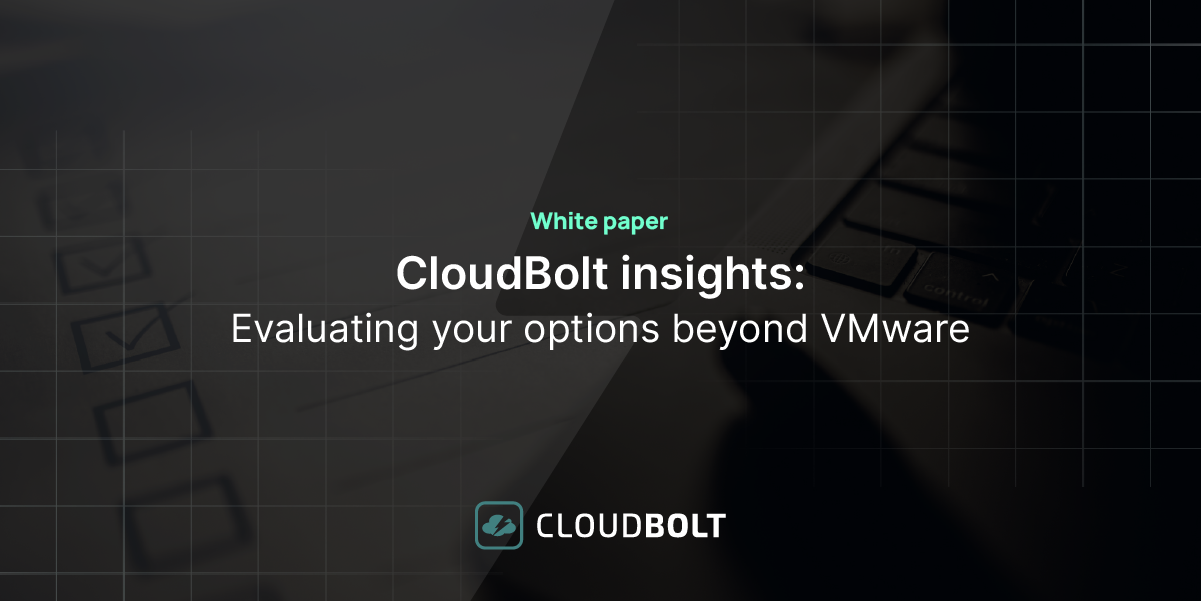
VMware Migration – Evaluating your Options
Near the end of 2023, millions of users waited with abated breath to see if Broadcom’s $69 billion acquisition of…




